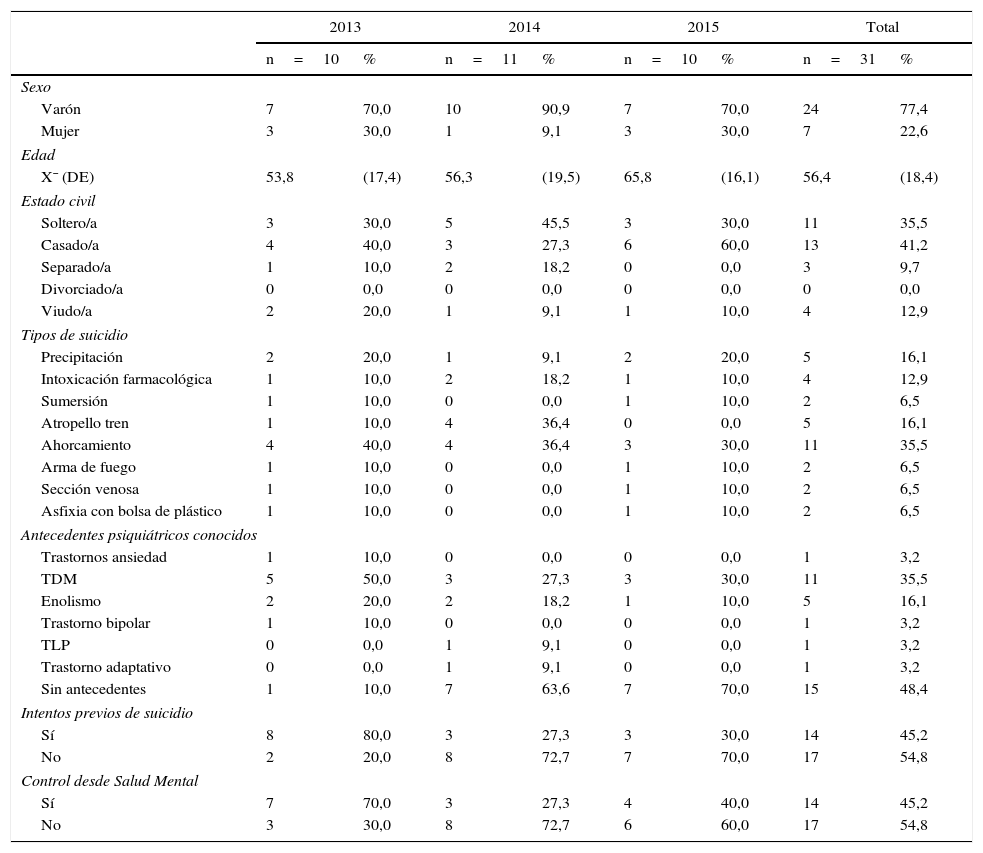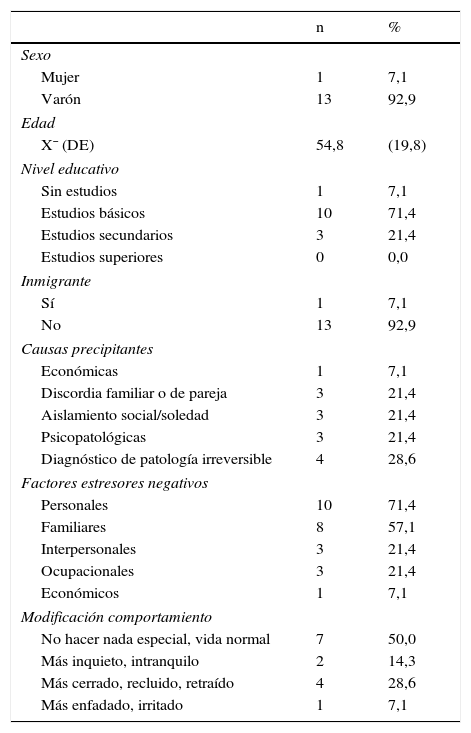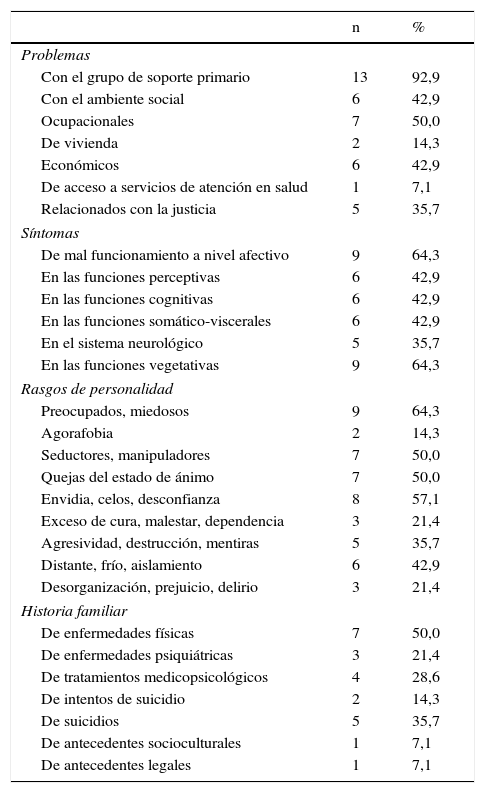El objetivo del presente estudio es describir el perfil de las muertes por suicidio en la comarca de Osona (Barcelona) durante el período 2013-2015 y analizar la aplicación de la técnica autopsia psicológica (AP).
Material y métodosEl diseño es retrospectivo a partir del registro de suicidios (n=31). La muestra de la AP (n=14) estuvo formada por familiares y personas adultas próximas al fallecido, reclutadas a través del registro del Consorci Hospitalari de Vic. Se utilizó el método de la AP mediante la Semi-Structured Interview for Psychological Autopsy (SSIPA), una entrevista semiestructurada adaptada y validada al español (García-Caballero et al., 2010).
ResultadosEl perfil mayoritario de las muertes por suicidio corresponde a varones, casados, sin antecedentes psiquiátricos que utilizaron métodos como el ahorcamiento o el arrollamiento por tren. En la submuestra en que se realizó la AP se observa que los factores precipitantes o motivadores están relacionados con problemas a nivel social, familiar y de salud. La prevalencia de psicopatologías diagnosticadas no fue mayoritaria, pero se detectaron rasgos de personalidad vulnerables. En muchos casos hubo preparativos y verbalizaciones previas respecto a sus intenciones, por lo que se deduce que la decisión fue tomada de forma premeditada y no impulsiva.
ConclusionesLa AP representa una herramienta eficaz para la obtención de datos relativos al suicidio que pueden ser relevantes y útiles en el diseño y la implementación de programas de prevención, ayudando a detectar la idiosincrasia particular de cada región y permitiendo una mayor adaptación e individualización de dichos programas.
The aim of the present study is to describe the pattern of suicide deaths in the region of Osona (Barcelona) during the period 2013-2015, and to analyse the use of the Psychological Autopsy (PA) method.
Material and methodsIt is a retrospective design using the suicide deaths register (n=31). The PA sample (n=14) was composed of adult relatives and close friends, recruited from the Consorci Hospitalari de Vic. The PA method was performed using the Semi-Structured Interview for Psychological Autopsy (SSIPA), adapted and validated to the Spanish language (García-Caballero et al., 2010).
ResultsThe main profile was of a male, married, with no psychiatric history, and used methods like hanging or being running over by a train. In the sub-sample on which the PA was carried out, it was observed that the main precipitating or motivating factors were those related to social, family, and health problems. The prevalence of diagnosed psychopathologies was not a majority profile, but vulnerable personality traits were found. As most of the cases showed previous preparations and verbalisations regarding their intention, it can be concluded that the decision was not impulsive but deliberate.
ConclusionsThe PA method is an efficient tool to describe and obtain data about suicide that may be relevant and useful in the design and implementation of prevention programs. Moreover, it may help to perceive the individual characteristics of each region promoting a better adjustment and individualisation of these programs.
Artículo
Comprando el artículo el PDF del mismo podrá ser descargado
Precio 19,34 €
Comprar ahora








